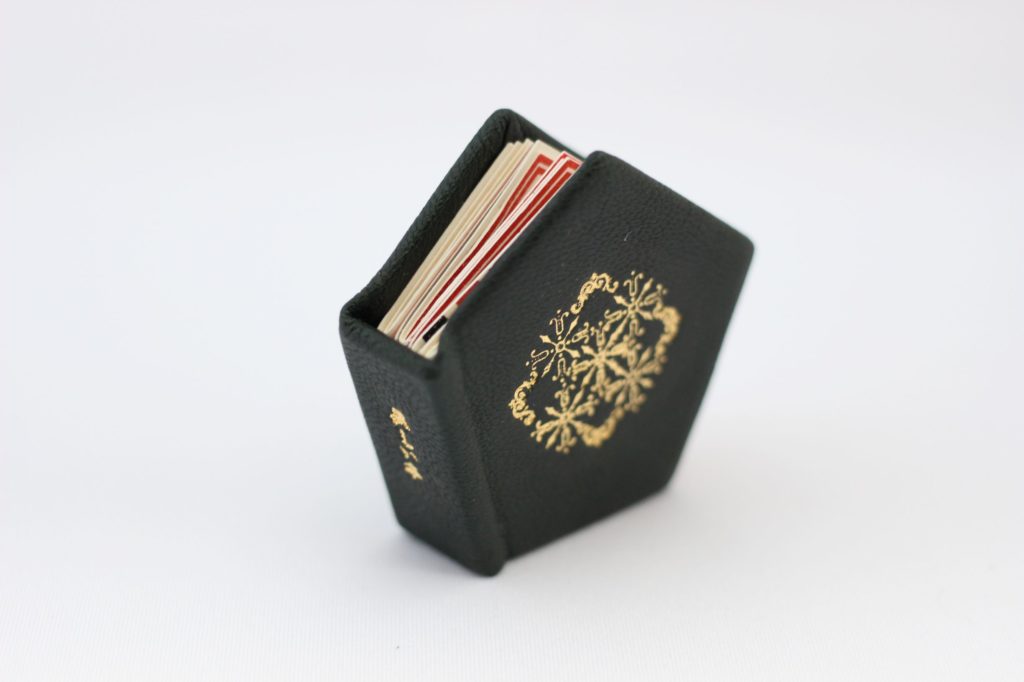
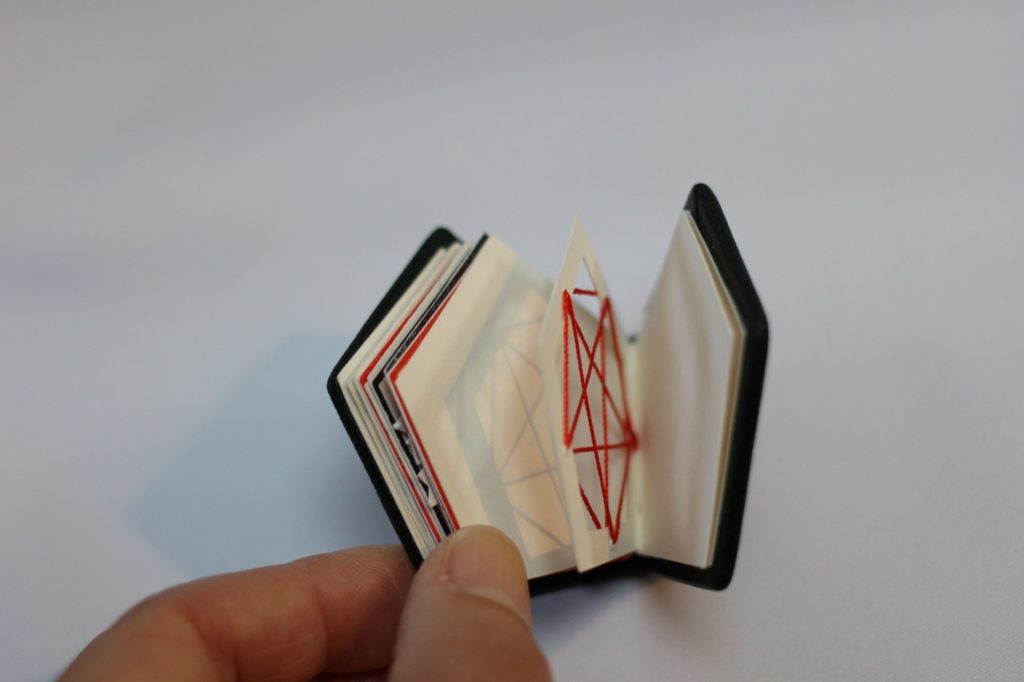
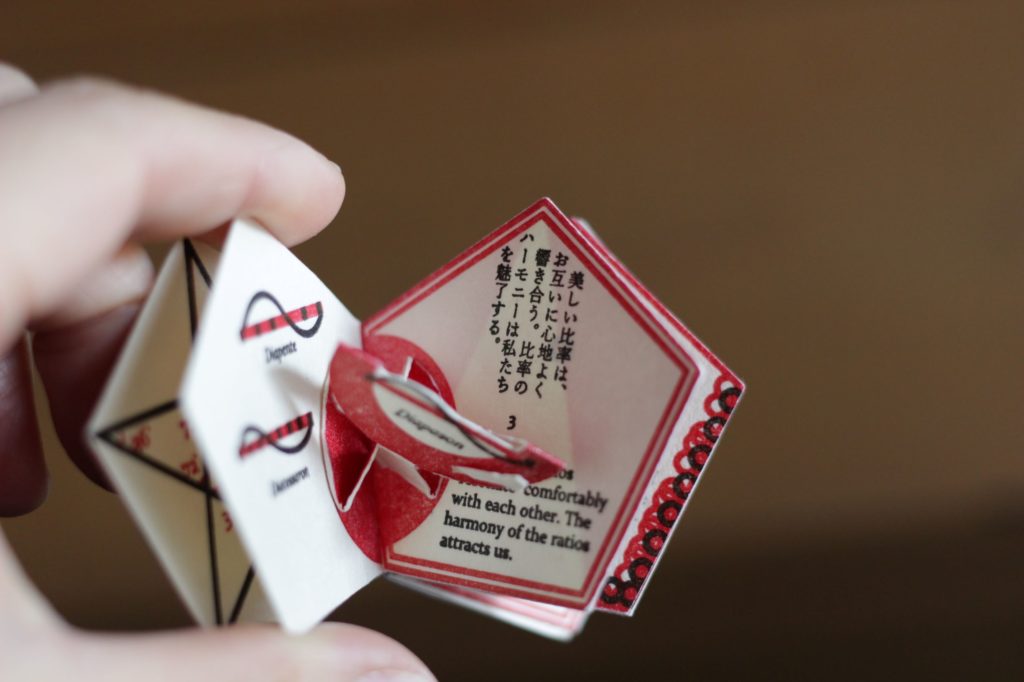
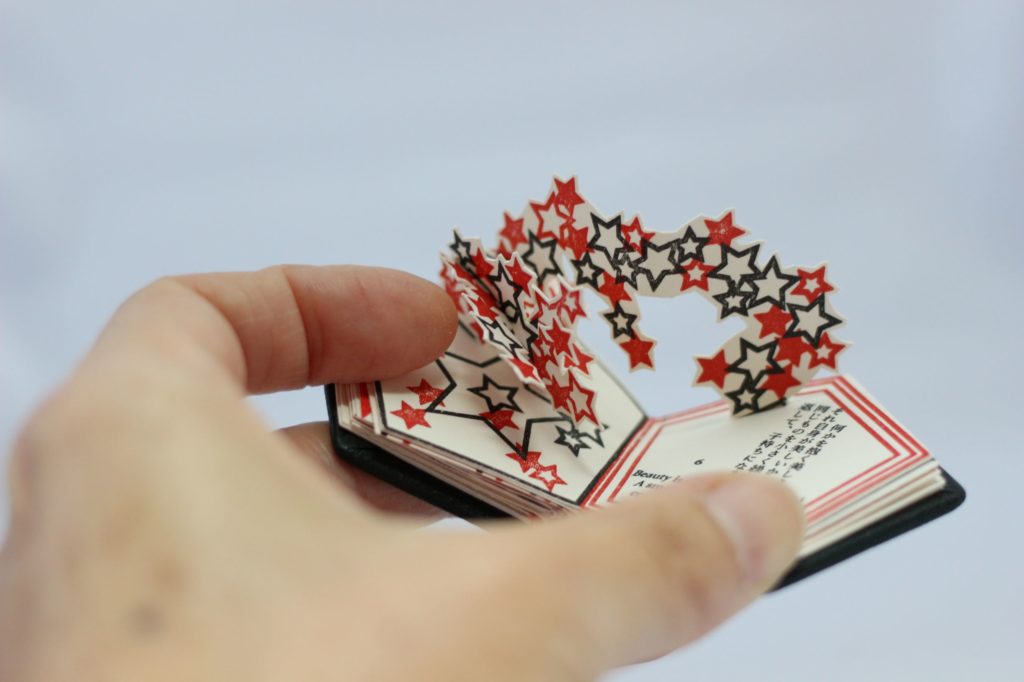
The first zine I want to discuss is called “Beautiful Book” by Miyako Akai. It has a simple goal rather than a radical political view: to let everyone enjoy the beauty of pentagons. Miyako chose to make it because “the pentagon shape contains the golden ratio in it. There are traditional patterns using the pentagon. Harmony, change, and repetition also produce beauty.” It’s small in size, but what’s unique is the way it’s made. As we can see from the photos, the author used different materials and cutouts to create the shape of pentagons. The zine is made of Rober paper, and the two solid colors are printed in letterpress.
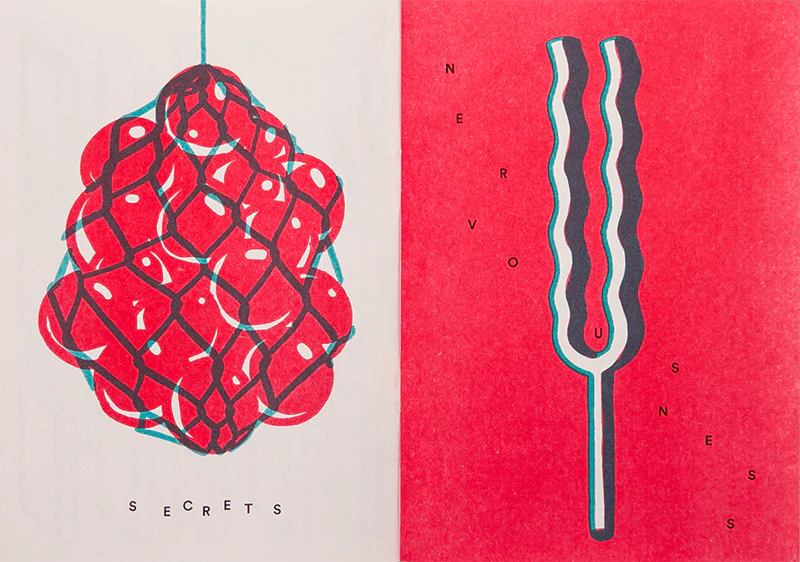
The second zine I want to share is Close Encounters by Hannah K. Lee. Close Encounters is a collection of illustrations about human relationships, shown through the interaction of objects and color. This Risograph zine comes in red, blue, and black. I really like how it plays with words and illustrations. The combinations are simple but diversified.
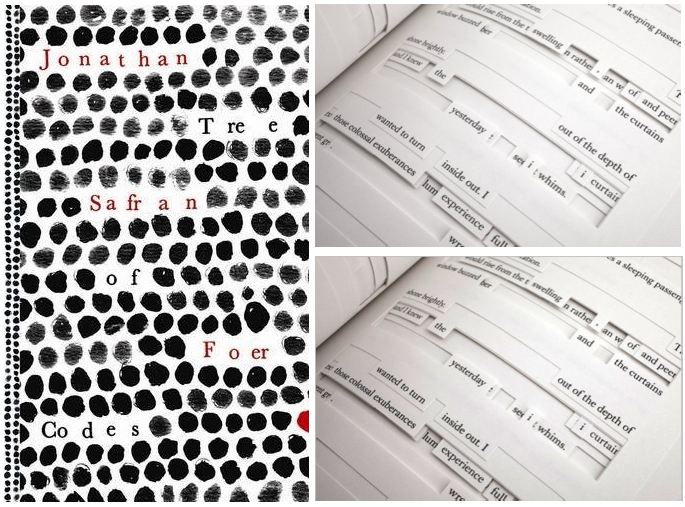
The third zine is an art book called Tree of codes by Jonathan Safran Foer. The die-cut interior of Tree of Codes is made up of select words, carefully re-assembled from Foer’s favorite novel, Bruno Schultz’s The Street of Crocodiles, to create an entirely new narrative. It tells a story of an enormous last day of life — as one character’s life is chased to extinction. But more than the book’s storytelling, its artistry is most talked about and praised. Initially deemed impossible to make, the book is a first — as much a sculptural object as it is a work of masterful storytelling with a different die-cut on every page. According to the author’s interview, this is a kind of experiment with the future of books and narrative experience. I really like the endless possibilities it inspires with this die-cut narrative, which can inspire different people to look at the story differently.